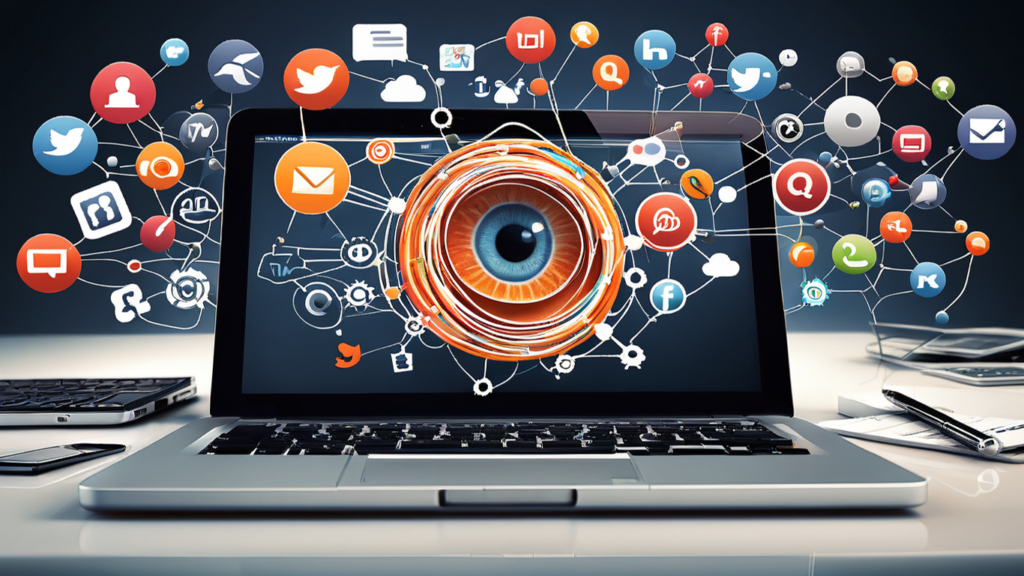Revolutionizing Data Processing and Connectivity
In an era of exponential data growth and increasing demand for real-time responsiveness, edge computing has emerged as a pivotal solution for processing data closer to where it is generated. Traditional cloud computing models, while still essential, often struggle to keep up with the sheer volume of data produced by billions of connected devices. This is where edge computing steps in, shifting data processing and storage away from centralized data centers to the “edge” of the network, reducing the distance between devices and the servers that handle the data. This proximity enables faster decision-making, lower latency, and enhanced efficiency—necessities in a world driven by the Internet of Things (IoT), artificial intelligence (AI), and automation.
Today’s digitally-driven world, vast amounts of data are being generated at an unprecedented rate. The need for real-time data processing, efficient storage, and faster decision-making has given rise to edge computing—a transformative approach to data management. Unlike traditional cloud computing, where data is sent to centralized data centers, edge computing brings the data processing closer to the source—at the “edge” of the network. By minimizing the distance between data generation and data processing, edge computing offers several advantages, including lower latency, increased speed, reduced bandwidth costs, and improved security.
The concept of edge computing is not new, but it has gained momentum with the growth of the Internet of Things (IoT), 5G technology, artificial intelligence (AI), and machine learning (ML). Industries such as healthcare, manufacturing, telecommunications, transportation, and retail have adopted edge computing to optimize their operations and improve customer experiences. For instance, autonomous vehicles rely heavily on edge computing to process data from sensors and make real-time driving decisions. Similarly, in the healthcare sector, wearable devices and sensors collect and process critical health data at the edge, enabling timely interventions and diagnoses.
Edge computing is positioned to play a crucial role in the future of computing, especially as businesses seek faster, more scalable solutions to handle massive data volumes. With the exponential growth of connected devices, there is a pressing need to decentralize data management and enhance processing capabilities. As a result, edge computing not only helps organizations process data closer to its source but also reduces reliance on centralized cloud infrastructures.
In this comprehensive article, we will explore the key aspects of edge computing, including its definition, how it works, the advantages and challenges it brings, its role in specific industries, and its potential future impact on technology and society. Understanding edge computing or computing on the edge is essential for businesses and individuals looking to stay ahead in the rapidly evolving technological landscape.
Understanding Edge Computing
Edge computing refers to the practice of processing data closer to its source—at the edge of the network—rather than relying on centralized data centers or cloud servers. The idea is to reduce latency by minimizing the physical distance that data must travel before being processed. This proximity to the data source allows for faster decision-making, real-time analytics, and more efficient bandwidth usage.
In contrast, traditional cloud computing involves sending data to remote data centers, which can introduce delays, especially when real-time processing is required. Edge computing decentralizes data management by enabling computing power to be distributed across local devices, sensors, and machines. This distributed model enhances the efficiency and responsiveness of data-driven operations, particularly in scenarios where milliseconds matter, such as autonomous vehicles, robotics, and smart cities.
Key to understanding edge computing is recognizing its relationship with IoT and 5G. The explosion of connected devices in industries ranging from healthcare to manufacturing has created massive data volumes that need to be processed in real time. By leveraging the power of edge computing, organizations can optimize how data is collected, processed, and stored, leading to greater operational efficiency.
Real-world examples of edge computing are already reshaping industries. In the healthcare sector, wearable health devices, such as fitness trackers and heart monitors, use edge computing to process patient data in real time, providing instant insights and alerts to medical professionals, potentially saving lives. Similarly, autonomous vehicles rely heavily on edge computing to analyze data from sensors and cameras on the car itself, allowing for immediate responses to changing road conditions without relying on distant cloud servers. The industrial sector also benefits from edge computing through predictive maintenance, where sensors on machinery in factories monitor equipment health and performance. By processing this data locally, companies can predict failures and conduct maintenance before a breakdown occurs, reducing downtime and operational costs.
Telecommunications is another area seeing a surge in edge computing, particularly with the rollout of 5G networks. Through mobile edge computing (MEC), telecommunications providers are delivering ultra-fast data processing at cell towers, enabling seamless connectivity for services like augmented reality (AR) and virtual reality (VR), as well as real-time gaming. The transportation sector is leveraging edge computing in smart traffic management systems, which gather and process data from traffic cameras, sensors, and vehicles to optimize traffic flow in cities.

These examples underscore the real-world impact of edge computing, which is rapidly becoming a cornerstone technology in a variety of industries, meeting the growing need for faster, localized data processing.
How Edge Computing Works
Edge computing operates through a distributed architecture that includes edge devices (such as sensors, cameras, and wearable devices), edge servers, and edge gateways. These components work together to process data locally and transfer only relevant insights to the cloud or a central server when needed.
The architecture of edge computing enables localized data processing through these steps:
- Edge Devices: Sensors and other devices collect data from the surrounding environment. These devices are embedded with computing power to preprocess the data at the point of generation.
- Edge Servers and Gateways: Once data is captured, edge servers or gateways aggregate, analyze, and filter the data. In some cases, these systems make decisions autonomously, reducing the need to send data to centralized cloud servers.
- Cloud Integration: When necessary, data that has been processed at the edge can be sent to the cloud for deeper analysis, long-term storage, or integration with other business systems.
5G technology plays a critical role in supporting edge computing by providing the low-latency, high-bandwidth infrastructure required for real-time applications. Edge computing thrives in environments where data needs to be processed rapidly, and 5G’s advanced connectivity capabilities make this possible.
Advantages of Edge Computing
Edge computing offers several advantages that make it an attractive option for businesses and industries that rely on real-time data processing.
Reduced Latency and Faster Decision-Making
One of the most significant benefits of edge computing is the reduction in latency. By processing data at or near the source, edge computing eliminates the delays that occur when data has to travel to and from distant cloud data centers. This is critical for applications like autonomous vehicles and industrial automation, where milliseconds can make a difference.
Improved Bandwidth Efficiency and Reduced Network Congestion
With edge computing, not all data needs to be sent to the cloud, which reduces the load on central servers and improves bandwidth efficiency. This is particularly useful in environments where a large number of IoT devices are generating continuous streams of data.
Enhanced Data Security and Privacy
By keeping data closer to its source, edge computing can enhance data security. Sensitive information can be processed locally, minimizing the risk of data breaches during transmission to cloud servers. Additionally, this approach can help businesses comply with data privacy regulations by ensuring that certain data never leaves the local environment.
Cost Savings and Energy Efficiency
Edge computing can reduce operational costs by decreasing the amount of data that needs to be transmitted to the cloud, thus lowering bandwidth and storage expenses. Furthermore, by processing data locally, edge computing can reduce energy consumption, as the need for continuous, high-power cloud computing is minimized.

Scalability and Flexibility for Growing Business Needs
Edge computing enables businesses to scale their operations more efficiently. As the number of connected devices grows, edge infrastructure can be expanded without overwhelming centralized systems. This flexibility allows organizations to adapt to increasing data volumes and changing business requirements.
Challenges and Limitations of Edge Computing
While edge computing offers numerous benefits, it is not without its challenges.
Infrastructure and Hardware Costs
Implementing edge computing requires investment in specialized hardware, such as edge servers and IoT devices. This can be costly, especially for organizations that need to deploy edge infrastructure on a large scale.
Security and Privacy Concerns
Although edge computing can improve data security, it also introduces new risks. Edge devices are often distributed across wide geographical areas, making them vulnerable to physical tampering and cyberattacks. Securing these devices and ensuring data integrity across a distributed network is a complex challenge.
Integration with Legacy Systems
Many businesses have existing IT infrastructures that rely on cloud or on-premises systems. Integrating edge computing with these legacy systems can be difficult and require significant investment in technology upgrades and training.
Managing Distributed Networks and Edge Devices
With edge computing, data is processed across a network of devices and systems. Managing and maintaining these distributed networks can be challenging, particularly when it comes to troubleshooting issues or ensuring consistent performance across various locations.
Technical Skills and Expertise Requirements
Deploying and managing edge computing infrastructure requires specialized technical skills. Businesses may need to invest in training or hire experts with experience in edge computing, IoT, and distributed systems.
Edge Computing in Key Industries
Edge computing or computing at the edge has a broad range of applications across various industries, helping to improve efficiency, reduce costs, and deliver better services.
Healthcare
Edge computing is revolutionizing healthcare by enabling real-time patient monitoring, wearable health devices, and telemedicine solutions. By processing health data at the edge, healthcare providers can make faster decisions, improve patient outcomes, and reduce the burden on centralized systems.
Manufacturing
In the manufacturing industry, edge computing supports smart factories, predictive maintenance, and automation. By processing data from machines and sensors locally, manufacturers can optimize production processes, reduce downtime, and improve overall efficiency.
Telecommunications
Edge computing is critical for the deployment of 5G networks and mobile edge computing (MEC). By bringing data processing closer to the user, telecommunications providers can offer faster, more reliable services, improving the overall customer experience.

Transportation
In the transportation sector, edge computing enables the development of autonomous vehicles, real-time traffic management systems, and fleet tracking solutions. By processing data locally, these systems can make faster, more accurate decisions.
Retail
Retailers are leveraging edge computing to enhance the in-store experience with personalized recommendations, smart shelves, and automated inventory management. By processing data from sensors and cameras in real-time, retailers can improve customer service and optimize store operations.
Agriculture
Edge computing is driving the adoption of precision agriculture, where data from sensors, drones, and other devices is used to monitor crops, manage irrigation systems, and optimize farming practices.
The Role of Edge Computing in IoT and 5G
The Internet of Things (IoT) is one of the primary drivers of edge computing, as connected devices generate massive amounts of data that need to be processed quickly. With the advent of 5G, edge computing is becoming even more critical, as the low-latency, high-bandwidth capabilities of 5G networks enable real-time data processing at the edge.
Edge computing and IoT are being used in various real-world applications, including smart homes, industrial automation, and smart cities. As these technologies continue to evolve, we can expect even more innovative solutions that combine the power of IoT, 5G, and edge computing.
Security Implications of Edge Computing
While edge computing offers improved security by keeping data closer to its source, it also introduces new security challenges. With data being processed across a distributed network of devices, there is a greater risk of cyberattacks, physical tampering, and data breaches. Securing edge devices and ensuring data integrity across the network is essential to mitigate these risks.
Emerging security protocols, such as blockchain and zero-trust architectures, are being developed to address the unique security challenges of edge computing.
The Future of Edge Computing
Edge computing is poised for significant growth in the coming years, driven by advancements in AI, machine learning, and 5G technology. As more devices become connected, the demand for real-time data processing will continue to increase, making edge computing an essential component of the modern technological landscape.

Edge computing will also play a key role in the development of smart cities, where real-time data from sensors, cameras, and other devices will be used to optimize urban infrastructure and improve the quality of life for residents.
FAQs
Here are 20 frequently asked questions (FAQs) about edge computing with comprehensive answers, based on common inquiries across search platforms. These FAQs provide a comprehensive overview of edge computing, addressing common queries and highlighting the benefits, challenges, and future potential of this technology.
1. What is edge computing?
Edge computing is a distributed IT architecture that brings data processing closer to the data source or end-user devices, such as IoT devices, sensors, or machines. Instead of sending data to a centralized cloud, edge computing processes data locally or on nearby servers, reducing latency and improving speed and efficiency.
2. How does edge computing differ from cloud computing?
Edge computing processes data locally, close to where it is generated, while cloud computing involves sending data to centralized data centers for processing. Edge computing reduces latency and bandwidth use, while cloud computing excels at large-scale data storage and analysis. The two often complement each other in hybrid architectures.
3. Why is edge computing important?
Edge computing is crucial because it allows for faster, real-time processing of data, reduces network congestion, and enhances the performance of applications that require low-latency responses. It is particularly important for industries like healthcare, transportation, and manufacturing, where immediate data processing is essential.
4. What are some examples of edge computing in use today?
Real-world examples of edge computing include:
- Autonomous vehicles processing sensor data in real time for safe navigation.
- Wearable health devices that monitor and analyze patient data instantly.
- Smart traffic systems optimizing urban traffic flow using local data.
- Retail stores using in-store edge devices for personalized customer experiences and inventory management.
5. What is the role of IoT in edge computing?
The Internet of Things (IoT) drives the need for edge computing. IoT devices generate vast amounts of data, and edge computing processes this data locally to ensure real-time decision-making, reducing the need to send everything to centralized cloud servers.
6. How does 5G enable edge computing?
5G networks enhance edge computing by providing ultra-low latency and high-speed bandwidth. This allows edge devices to process and exchange data quickly, supporting real-time applications such as autonomous vehicles, AR/VR experiences, and smart city infrastructure.
7. What are the benefits of edge computing?
Key benefits of edge computing include:
- Reduced latency for real-time data processing.
- Lower bandwidth use as data is processed locally.
- Improved security by keeping sensitive data closer to the source.
- Cost savings on cloud services by processing data locally.
- Greater reliability since edge devices can continue to operate even when disconnected from the cloud.
8. What challenges does edge computing face?
Challenges of edge computing include:
- Security risks due to distributed networks of devices.
- Infrastructure costs for deploying edge servers and hardware.
- Data management complexity from handling distributed data sources.
- Integration with existing cloud and legacy systems.
- Technical expertise required to manage and maintain edge computing systems.
9. Is edge computing secure?
Edge computing can enhance security by processing sensitive data locally, reducing exposure during transmission. However, it also introduces new security challenges, such as protecting numerous distributed devices from cyberattacks. Implementing robust encryption, authentication, and security protocols is critical to maintaining edge computing security.
10. What industries benefit the most from edge computing?
Industries benefiting significantly from edge computing include:
- Healthcare: Real-time patient monitoring and diagnostics.
- Manufacturing: Predictive maintenance and automation.
- Transportation: Autonomous vehicles and traffic management.
- Retail: Personalized shopping experiences and inventory control.
- Telecommunications: 5G network optimization and low-latency services.
- Agriculture: Precision farming and crop monitoring.
11. How does edge computing impact cloud computing?
Edge computing complements cloud computing by offloading real-time data processing from the cloud to local edge devices, reducing latency and bandwidth use. Many businesses adopt hybrid models where edge computing handles immediate data needs while the cloud manages long-term storage and large-scale analysis.
12. Can edge computing work without the cloud?
Yes, edge computing can operate independently of the cloud in certain cases. However, many edge computing systems rely on the cloud for long-term data storage, advanced analytics, and larger-scale operations. In some scenarios, edge devices will temporarily function offline and sync with the cloud later.

13. What are edge devices in edge computing?
Edge devices are hardware components that process data close to the source. Examples include IoT sensors, smart cameras, industrial machines, wearable devices, and local servers. These devices often have computing capabilities that allow them to analyze and act on data without needing to send it to the cloud.
14. What is mobile edge computing (MEC)?
Mobile edge computing (MEC) is a form of edge computing that brings data processing closer to mobile devices within telecommunications networks, typically at 5G cell towers. MEC allows for faster mobile app performance, lower latency in communication, and enhanced connectivity, which benefits applications like real-time gaming and AR/VR.
15. What is fog computing, and how is it related to edge computing?
Fog computing is a broader concept that encompasses both edge computing and cloud computing. It extends the cloud closer to the edge by adding an intermediary layer between the edge devices and the cloud. Fog computing processes data at various points in the network, distributing processing tasks across multiple locations, including edge devices, gateways, and cloud servers.
16. What is the role of AI in edge computing?
Artificial intelligence (AI) enhances edge computing by enabling intelligent, real-time decision-making at the edge. AI algorithms can be embedded in edge devices to process and analyze data locally, reducing the need for data to be sent to the cloud. This combination is crucial for applications like autonomous vehicles, industrial automation, and smart city initiatives.
17. How can businesses implement edge computing?
To implement edge computing, businesses need to:
- Assess their data processing needs to identify which operations benefit from real-time or localized processing.
- Deploy edge devices or servers close to the data sources.
- Ensure network connectivity, such as integrating with 5G or local networks.
- Develop or integrate software platforms for edge computing management and data analytics.
- Secure their edge infrastructure with robust cybersecurity measures.
18. How does edge computing improve scalability?
Edge computing improves scalability by distributing data processing across multiple edge devices, reducing the load on central cloud servers. As businesses grow, they can add more edge devices without overwhelming the core network, allowing for incremental scaling and efficient handling of increasing data volumes.
19. What are the cost implications of edge computing?
While there are initial infrastructure and hardware costs associated with deploying edge computing, it can result in significant cost savings over time. By processing data locally, businesses can reduce cloud storage, bandwidth, and energy costs. Additionally, edge computing improves operational efficiency, leading to cost reductions in areas like maintenance and downtime.

20. What is the future of edge computing?
The future of edge computing is promising, with growing adoption across industries as more IoT devices come online and 5G networks expand. Innovations in AI, machine learning, and cybersecurity will further enhance edge computing capabilities. We can expect edge computing to play a central role in the development of smart cities, autonomous vehicles, advanced robotics, and immersive technologies like AR and VR.
Summarizing it all
Edge computing represents a paradigm shift in how data is processed and managed in the digital age. By bringing computation closer to the data source, edge computing offers numerous advantages, including reduced latency, improved bandwidth efficiency, enhanced security, and cost savings. While there are challenges to overcome, such as infrastructure costs and security concerns, the benefits of edge computing make it a compelling solution for industries looking to stay competitive in an increasingly connected world.
As technology continues to evolve, edge computing will play an even more critical role in shaping the future of computing, enabling new innovations and transforming industries across the globe. Understanding and adopting edge computing is essential for businesses and individuals who want to remain at the forefront of technological advancement.
Cool reads





Wow wonderful blog layout How long have you been blogging for you make blogging look easy The overall look of your site is great as well as the content
Simply desire to say your article is as surprising The clearness in your post is simply excellent and i could assume you are an expert on this subject Fine with your permission let me to grab your feed to keep up to date with forthcoming post Thanks a million and please carry on the gratifying work
Thank you very much! Appreciate you liked the post.
Thank you for the auspicious writeup It in fact was a amusement account it Look advanced to more added agreeable from you By the way how could we communicate